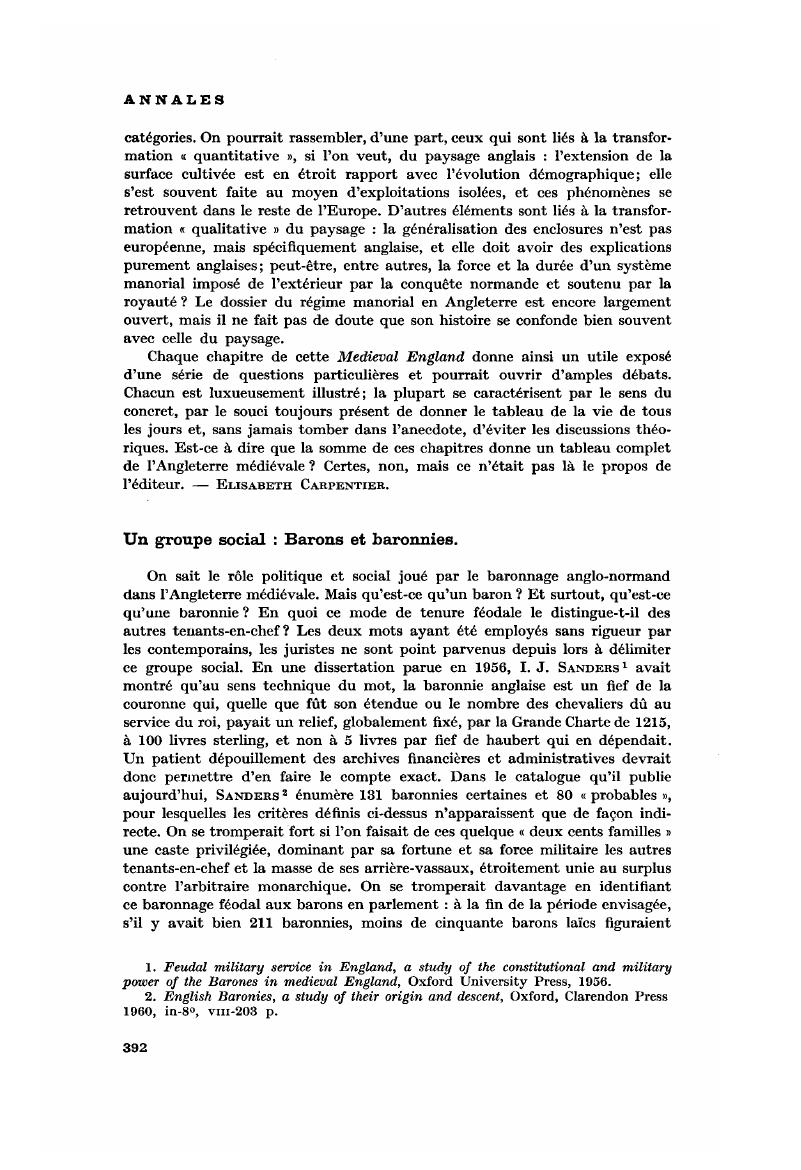No CrossRef data available.
Published online by Cambridge University Press: 11 October 2017

page 392 note 1. Feudal military service in England, a study of the constitutional and military power of the Barones in médiéval England, Oxford University Press, 1956.
page 392 note 2. English Bannies, a study of their origin and descent, Oxford, Clarendon Press 1960, in-8°, vm-203 p.
page 393 note 1. Studies in the histary of the English feudal barony, Baltimore, John Hopkins Press, 1943.
page 393 note 2. Les patronymes anglo-normands sont transcrits dans les graphies coutumières aux érudits d'outre-Manche, qui déforment fâcheusement la toponymie normande ou française : Abitot, Béarne, Belesme, Braose, Burun, Grandison, Gurnay, Stuteville, Valoynes, Surdeval, pour Abétot, Béarn, Bellême, Briouze, Buron, Grandson, Gournay, Estouteville, Valognes, Sourdeval. Et l'on retrouve de vieux amis latinisés, comme Eudo Dapifer, ou des hybrides anglo-latins, comme John de Pratellis. Peut-on faire de Conan ou de Pierre Mauclerc des ducs de Bretagne, titre qui ne fut officiellement reconnu qu'en 1327 ?